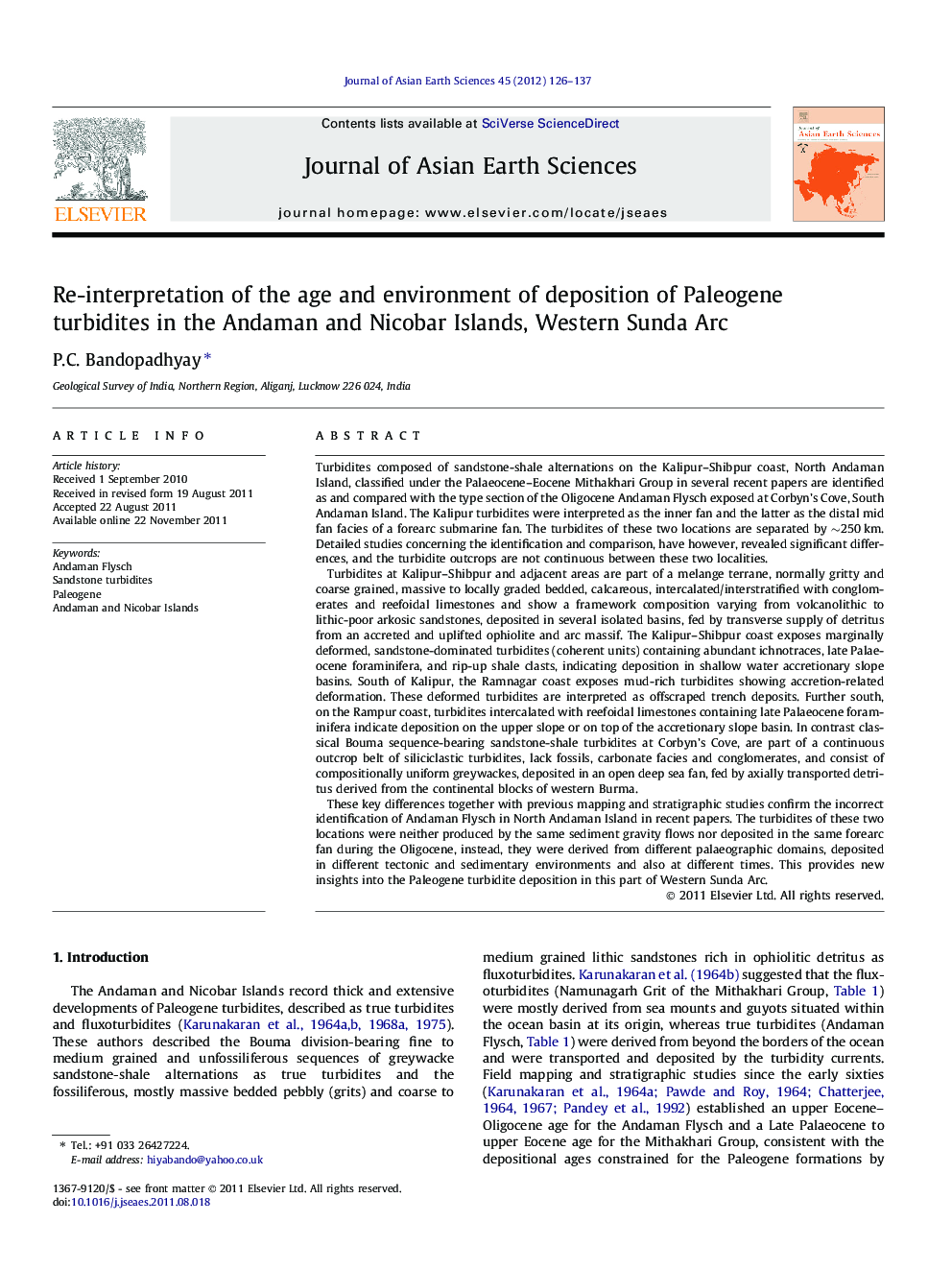| کد مقاله | کد نشریه | سال انتشار | مقاله انگلیسی | نسخه تمام متن |
|---|---|---|---|---|
| 4731560 | 1640419 | 2012 | 12 صفحه PDF | دانلود رایگان |

Turbidites composed of sandstone-shale alternations on the Kalipur–Shibpur coast, North Andaman Island, classified under the Palaeocene–Eocene Mithakhari Group in several recent papers are identified as and compared with the type section of the Oligocene Andaman Flysch exposed at Corbyn’s Cove, South Andaman Island. The Kalipur turbidites were interpreted as the inner fan and the latter as the distal mid fan facies of a forearc submarine fan. The turbidites of these two locations are separated by ∼250 km. Detailed studies concerning the identification and comparison, have however, revealed significant differences, and the turbidite outcrops are not continuous between these two localities.Turbidites at Kalipur–Shibpur and adjacent areas are part of a melange terrane, normally gritty and coarse grained, massive to locally graded bedded, calcareous, intercalated/interstratified with conglomerates and reefoidal limestones and show a framework composition varying from volcanolithic to lithic-poor arkosic sandstones, deposited in several isolated basins, fed by transverse supply of detritus from an accreted and uplifted ophiolite and arc massif. The Kalipur–Shibpur coast exposes marginally deformed, sandstone-dominated turbidites (coherent units) containing abundant ichnotraces, late Palaeocene foraminifera, and rip-up shale clasts, indicating deposition in shallow water accretionary slope basins. South of Kalipur, the Ramnagar coast exposes mud-rich turbidites showing accretion-related deformation. These deformed turbidites are interpreted as offscraped trench deposits. Further south, on the Rampur coast, turbidites intercalated with reefoidal limestones containing late Palaeocene foraminifera indicate deposition on the upper slope or on top of the accretionary slope basin. In contrast classical Bouma sequence-bearing sandstone-shale turbidites at Corbyn’s Cove, are part of a continuous outcrop belt of siliciclastic turbidites, lack fossils, carbonate facies and conglomerates, and consist of compositionally uniform greywackes, deposited in an open deep sea fan, fed by axially transported detritus derived from the continental blocks of western Burma.These key differences together with previous mapping and stratigraphic studies confirm the incorrect identification of Andaman Flysch in North Andaman Island in recent papers. The turbidites of these two locations were neither produced by the same sediment gravity flows nor deposited in the same forearc fan during the Oligocene, instead, they were derived from different palaeographic domains, deposited in different tectonic and sedimentary environments and also at different times. This provides new insights into the Paleogene turbidite deposition in this part of Western Sunda Arc.
► Palaeogene turbidites of Andaman and Nicobar Islands are examined and reinterpreted.
► Ophiolite and arc-derived volcaniclastic and continent-derived siliciclastic sandstones.
► Deposition in different tectonic and sedimentary environments.
► Revise the tectonic/depositional model of this part of Western Sunda Arc.
Journal: Journal of Asian Earth Sciences - Volume 45, 2 February 2012, Pages 126–137